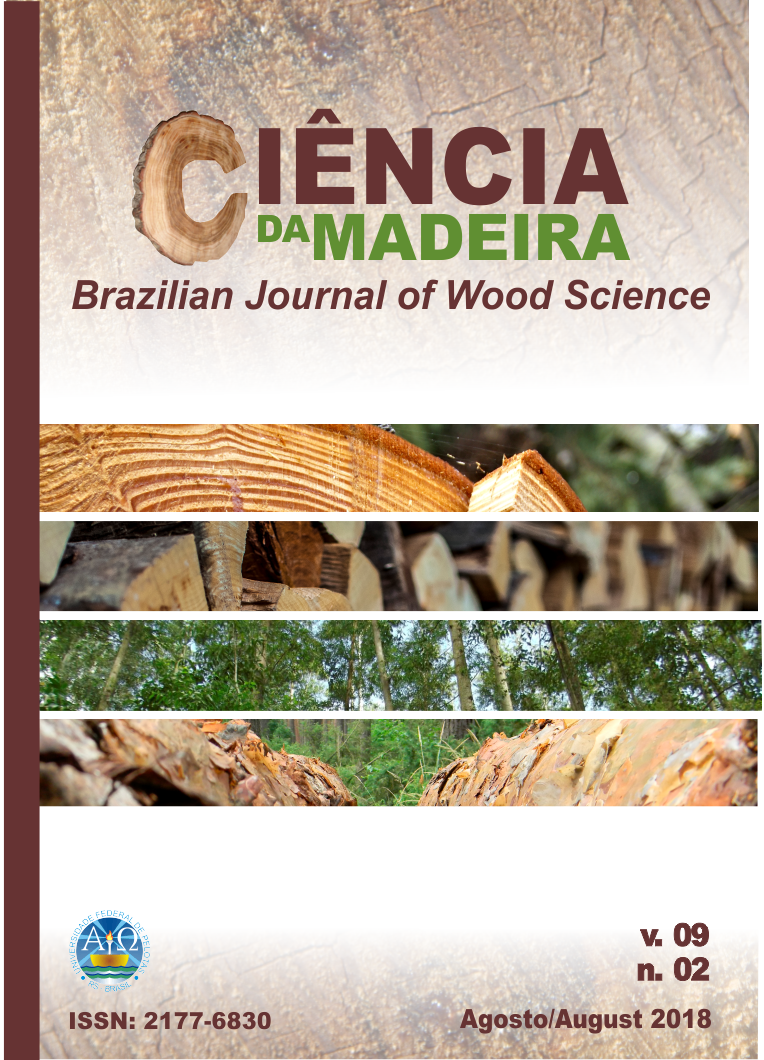Influence of toposequence position of Stryphnodendron adstringens trees on discrimination of samples based on spectroscopy
Resumo
Stryphnodendron adstringens is a native species from Caatinga and Cerrado biomes. The chemical composition of species is variable and depends on the part of the tree, as well as on genetic and soil characteristics related to the origin of the population. This paper describes the influence of toposequence position of trees on the discrimination of wood and bark samples based on visible (VIS), near-infrared (NIR) and mid-infrared (MID) spectroscopy. A total of 28 trees were collected in the northern part of Cerrado State Park in the municipality of Jaguariaíva, Paraná state, Brazil, in different types of soil, at seven
positions (0, 100, 200, 300, 400, 500 and 600 m) of the toposequence. The results showed the influence of the position of trees. The bark was classified as dark brown and the wood as rose-grey. VIS spectra was not efficient in sample discrimination. The Principal Component Analysis (PCA) of NIR spectra presented two groups that can be related to the the type of soil: (i) 0-300
m - Red-Yellow Latosol and Haplic Cambisol; (ii) 400-600 m - Red Latosol. MID infrared spectra of bark also showed the distinction of two previous groups; and analysis based on wood spectra of trees collected on 0-100m presented discrimination from other positions.
Copyright (c) 2018 Revista Ciência da Madeira (Brazilian Journal of Wood Science)

This work is licensed under a Creative Commons Attribution-NonCommercial-NoDerivatives 4.0 International License.
A CIÊNCIA DA MADEIRA resguarda o direito de modificar o trabalho em quaisquer hipóteses na ordem gramatical e ortográfica com o objetivo de manter a utilização correta da língua portuguesa ou ingles.
A CIÊNCIA DA MADEIRA passa a possuir o direito sobre todos os trabalhos enviados quanto a reprodução e publicação online.



 https://orcid.org/0009-0007-3945-9715
https://orcid.org/0009-0007-3945-9715